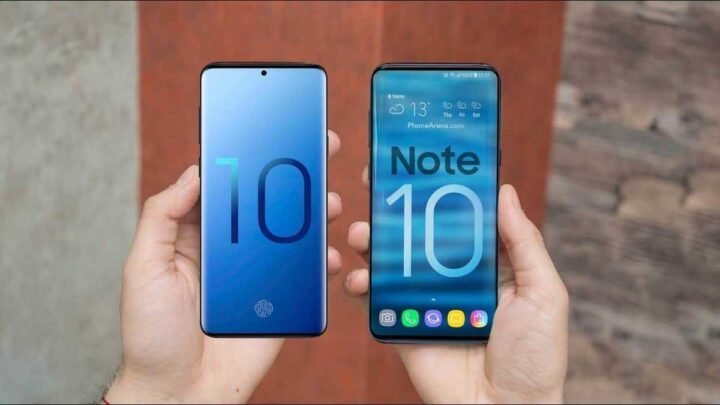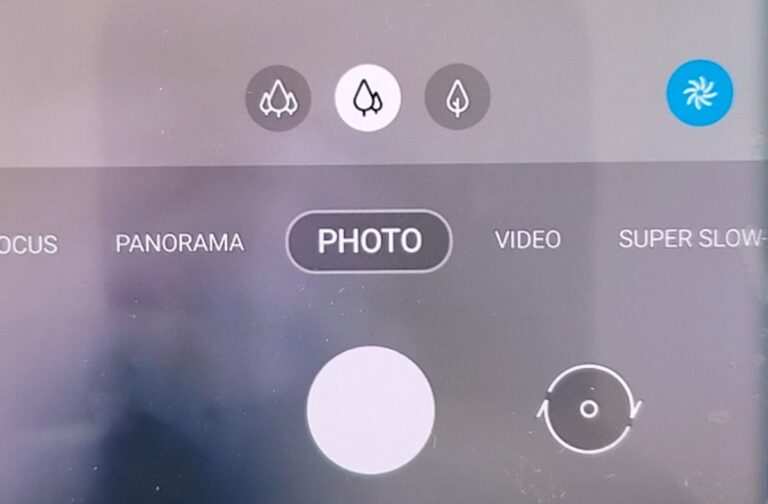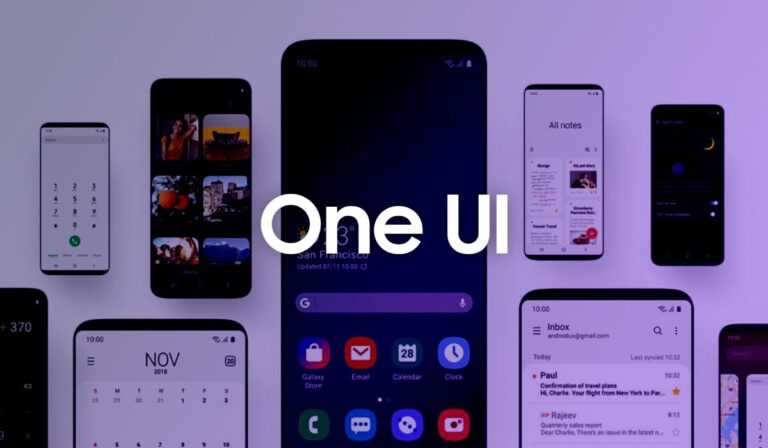Awesome Samsung Galaxy S10 Vs Note 10 – What Is The Difference?
Samsung’s Galaxy S and Galaxy Note lines have been extremely close in size, features, and capabilities over the years. The Galaxy S10 Vs Note 10 share a lot, but there are some big differences to consider when choosing between the two.
The Samsung Note series arrived last summer, with two models on offer. But how do they position themselves against the Galaxy S10 series?
We compared the specifications of the Note 10 and Note 10+ against the Galaxy S10, S10 +, and S10 5G to see how they differ and to help you figure out which Galaxy device is best for you.
Samsung Galaxy S10 Vs Note 10 – What’s the difference between Note 10 and S10?
While the Galaxy S10 Vs Note 10 models share several similarities, there are many differences between the two series.
Galaxy S10 Vs Note 10 Design
- Note 10 / Note 10+: Front camera with center holes, vertical rear cameras
- S10 / S10 + / S10 5G: Front camera positioned top right, horizontal rear cameras
The Galaxy Note 10 series, as usual, has a slightly different design from the S10 series.
The front camera is in the center of the screen for Note 10 devices, instead of the top right corner like the S10 models. The rear camera system on the Note 10 is also placed vertically in the top left corner, while the S10 models have a rear camera system aligned horizontally in the top center.
However, both series feature an IP68 rated glass and metal housing and both have USB Type-C charging ports.
The Note is slightly squarer in the corners than the Galaxy S, leaving room for the S Pen at the bottom. There is no 3.5mm headphone jack and no Bixby buttons on the Note 10.
S Pen
The note wins the S Pen
As many Note fans can expect, the Note 10 series offers a built-in S Pen, which supports Bluetooth and now has a six-axis motion sensor. This allows all the normal functions of the S Pen – such as writing and drawing – but now it offers more functions outside of the phone. It gives you gesture gestures to move through camera modes, including the ability to zoom in with a spiral motion.
The S Pen is located in the bottom right corner of the device, next to the charging port.
The Galaxy S does not offer an S Pen.
Galaxy S10 Vs Note 10 Display
- Note 10 / Note 10+: 6.3 inch / 6.8 inch screen
- S10 / S10 + / S10 5G: 6.1 inch / 6.4 inch / 6.7 inch screen
The Galaxy Note series typically has a larger screen than the Galaxy S series, although this year is a bit different.
Note 10 has a 6.3-inch screen, while Note 10+ has the largest (only) screen at 6.8 inches.
The Galaxy S10 has a 6.1-inch screen, the Galaxy S10 + has a 6.4-inch screen, and the Galaxy S10 5G has a 6.7-inch screen.
All models have Super AMOLED panels and all are HDR 10+ compatible. The S10 and Note 10+ models offer Quad HD + resolutions, but the smaller Note 10 has a Full HD + display, making it the smoothest of the five devices compared here.
Galaxy S10 Vs Note 10 Rear cameras
- Note 10, S10 and S10 +: three-camera system
- Note 10+ and S10 5G: Triple camera system with depth sensor
The standard Galaxy Note 10 and the Galaxy S10 and S10 + share the same camera specifications, with a triple rear camera consisting of a 12-megapixel main camera with dual aperture, a 16-megapixel ultra-wide-angle camera, and a 12-telephoto lens. megapixels.
The Galaxy Note 10+ and S10 5G also have this triple rear camera, but they also add a fourth 3D VGA depth sensor. This should mean that these cameras are better able to capture depth information.
Otherwise, we expect performance to be generally the same.
Front cameras
- Grade 10 / Grade 10+: 10 MP
- S10 / S10 + / S10 5G: 10MP / 10MP + 8MP / 10MP + 3D depth sensor
Both Galaxy Note 10 models have a single 10-megapixel front camera in the center of the screen. The Galaxy S10 also has a single front camera, shifted to the right.
The Galaxy S10 + and Galaxy S10 5G have dual front cameras, but they are not the same. The S10 + adds a second 8-megapixel sensor, while the S10 5G adds a 3D depth sensor. In our review of the Galaxy S10 +, we did not think that this expanding front camera really offers many extras compared to the one-off offer.
We can’t help but feel that with Samsung offering only one camera for the Note, reducing the impact on the screen is more important – and the features provided by the extra sensors on the front really aren’t worth it.
Galaxy S10 Vs Note 10 Size Dimensions
- Note 10 / Note 10+: 151 x 71.8 x 7.9 mm / 162.3 x 77.2 x 7.9 mm
- S10 / S10 + / S10 5G: 149.9 x 70.4 x 7.8mm / 157.6 x 74.1 x 7.8mm / 162.6 x 77.1 x 7.9mm
The Galaxy Note series is usually larger than the Galaxy S series, but this time it is not the case.
Note 10, despite offering a 0.2in a larger screen, is only slightly larger than the standard S10. The Note 10+, in turn, is larger than the S10 +, but slightly smaller than the S10 5G, although it has a 0.1-inch larger screen.
Headphone Plug
- Note 10 / Note 10+: Without 3.5mm headphone jack
- S10 / S10 + / S10 5G: 3.5mm headphone jack
All Galaxy S10 devices come with a 3.5mm headphone jack and AKG headphones in the box.
Note 10 foregoing the 3.5mm headphone jack, indicating that both models have either wireless headphones or USB Type-C headphones.
Galaxy S10 Vs Note 10 Battery
- Grade 10 / Grade 10+: 3500 mAh / 4300 mAh
- S10 / S10 +: 3100 mAh / 3500 mAh / 4500 mAh
The standard Note 10 comes with a 3500 mAh battery, while the Note 10+ has a 4300 mAh battery.
The S10 has a 3100 mAh battery, the S10 + has a 3500 mAh battery, and the S10 5G has a capacity of 4500 mAh.
Storage
- Note 10 / Note 10+: 256 GB / 256 GB and 512 GB
- S10 / S10 + / S10 5G: 128 GB and 512 GB / 128 GB, 512 GB and 1 TB / 256 GB
The Galaxy Note 10 only comes with a 256GB storage option and is the only model of the five with this feature that doesn’t support microSD for storage expansion. Note 10+ comes in 256 GB and 512 GB storage models.
The S10 is available in 128 GB and 512 GB storage models, the S10 + is available in 128 GB, 512 GB, and 1 TB storage options, and the S10 5G comes with 256 GB.
Exactly why the microSD fell on a model we’re not sure, but it could be Samsung’s start in finding a way to cut costs.
RAM
- Grade 10 / Grade 10+: 8 GB / 12 GB
- S10 / S10 + / S10 5G: 8GB / 8GB and 12GB / 8GB
Note 10 has support for 8 GB of RAM, while Note 10+ has 12 GB of RAM.
The S10 and S10 5G have 8 GB of RAM, while the S10 + is available with 12 GB of RAM if users select the 1 TB storage model.
5G connectivity
- S10 5G / Note 10 / Note 10+: 5G capabilities
- S10 / S10 +: 4G LTE
Galaxy Note 10 and Note 10+ are available on 4G LTE and 5G models in some countries. In the UK, only the Note 10+ is available as a 5G model. Only the Galaxy S10 5G model has 5G for the S10 range.
Both the S10 and S10 + are 4G LTE only.
Galaxy S10 Vs Note 10 – What Is Common?
- Processor
- Software experience
- The ultrasonic fingerprint sensor on the display
- Wireless reverse charging
Samsung Galaxy Note 10 devices have a hardware configuration similar to the Galaxy S10 series. Note 10 and Note 10+ run on Qualcomm Snapdragon 855 or Exynos 9825 chipset. S10 models run on Qualcomm Snapdragon 855 or Exynos 9820 so there is a little variation, but the only minor.
All models have perforated front cameras, meaning full Infinity O screens in both ranges, but the front camera specs and designs differ slightly between the Note and S10 models – more on this below.
The two series share features including wireless reverse charging, or Power Share, as Samsung calls it, a fingerprint sensor under the display, and a very similar software experience. Note 10 models, however, bring some new tricks thanks to the S Pen.
The overall software experience is the same too. They all use One UI on Android, and most of them are the same, with some differences in the camera and the S Pen’s features – but it’s essentially the same visual experience.
Conclusion
There are several differences between the Galaxy S10 Vs Note 10 intervals, but the decision will likely be yours as to whether or not you want the functionality of the S Pen as this is the biggest real difference.
The designs of the two series are slightly different, as are the dimensions and dimensions of the screens. But overall, the everyday experience of most of these phones is very similar. If you really want a 3.5mm headphone jack, this could take you to the Galaxy S, but then again, your decision will likely be made on the deals to get – and the older phone will likely be cheaper.






